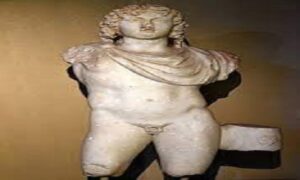Doctor Curmudgeon® A Colossus!
By Diane Batshaw Eisman, M.D. FAAP Doctor Eisman is in Family Practice in Aventura, Florida with her partner, Dr. Eugene Eisman, an internist/cardiologist
Colossus!
What comes to mind? Of course, it is the famous Colossus of Rhodes, the statue of the Greek God, Helios.
But let me tell you the tale of another magnificent Colossus.
During World War II, the Germans had their Enigma code machine, a complicated encryption device by which messages were transmitted. This complex network of electrical paths and rotors had been impossible to decipher.
Along came Alan Turing who cracked this “undecipherable” code. But then, the German Military requested that the Lorenz Company create an ever more sophisticated Lorenz teleprinter cipher.
Encrypted teleprinter messages from the Lorenz machine were referred to as ‘fish” by the British cryptanalysts. And so, the British called the Lorenz cipher “Tunny” (short for Tunafish).
“Tunny” was a much more complicated machine than Enigma.
Then along came the British top secret project, aptly named, “Colossus.”
From Wikipedia:
“Colossus was a set of computers developed by British codebreakers in the years 1943–1945… Colossus used thermionic valves (vacuum tubes) to perform Boolean and counting operations. Colossus is thus regarded as the world’s first programmable, electronic, digital computer, although it was programmed by switches and plugs and not by a stored program”
It was Alan Turing who personally requested that an engineer and mathematician, Tommy Flowers, be placed in charge of the Colossus program.
This innovative electrical engineer created a massive machine that was more than seven feet in height. Vacuum tubes were not always so reliable and needed a great deal of maintenance. But Flowers used them successfully as electronic switches. Flowers realized that some of the failures were due to being constantly switched on and off. And so Colossus’ power was permanently on. He said this created a “stable environment.” His second version of Colossus used about twenty four hundred tubes.
When the war ended, Flowers was left deeply in debt as he had used much of his own money to build Colossus. After the war, the British government finally gave him a grant of one thousand pounds. He shared a great deal of the funds with those who had worked with him.
Calvin Harper writes in GoCertify, “Ironically, at one point after the war, Flowers had the idea of manufacturing a general purpose computer. He was turned down for a loan because bank officials ‘didn’t believe such a machine was possible.’ For national security reasons, Flowers couldn’t tell them that he’d already built 10 such machines.”
Dr. Curmudgeon suggests “Bitter Medicine”, Dr. Eugene Eisman’s story of his experiences–from the humorous to the intense—as a young army doctor serving in the Vietnam War.
Bitter Medicine by Eugene H. Eisman, M.D. –on Amazon
Doctor Curmudgeon® is Diane Batshaw Eisman, M.D., a physician-satirist. This column originally appeared on SERMO, the leading global social network for doctors.
SERMO www.sermo.com
Click Here to Order Boxing Interviews Of A Lifetime By “Bad” Brad Berkwitt


